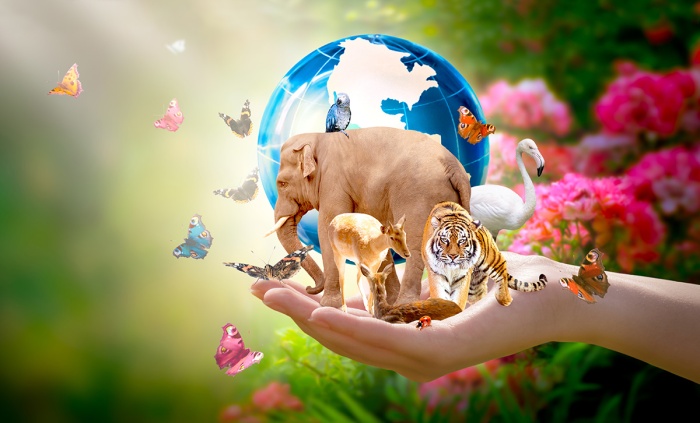Migratory species are the subject of a new report presented at the United Nations this week. Find out why populations of migratory animals are declining, and what scientists recommend to conserve and sustain these threatened species and their habitats.
Tag: Biodiversity
Survival of the Boring Doesn’t Drive Evolution
"Survival of the boring" describes a traditional view that evolutions favours unremarkable, generalist species over innovation. Find out how a new study challenges that assumption by showing that diversity and innovation often drive evolutionary success.
Dismal Progress Reports Cause Earth Day Frustrations
Dismal progress reports from Canada’s Commissioner of the Environment and Sustainable Development and the UN Secretary-General tarnished Earth Day festivities this year. Find out why the status of climate change and mass extinctions is nothing to celebrate.
Beaver Fossil Sheds Light on Mammal Evolution
A beaver fossil found in western Montana is the oldest such specimen ever discovered. Find out how this 30-million-year-old missing link is helping to explain the astonishing diversity in mammal species on our planet.Like all Canadians, I think of the beaver as an important symbol. It’s our national mascot, and the fur trade involving the … Continue reading Beaver Fossil Sheds Light on Mammal Evolution
Monarch Butterfly Added to Engangered Species List
Monarch Butterfly populations have been devasted over the last past few decades. Find out why the IUCN had added these iconic pollinators to the endangered species list and how scientists are working to save them from extinction.
Human-Wildlife Conflict Aggravated by Climate Crisis
Human-wildlife conflict is becoming an increasing concern as human activity encroaches on natural habitats due to climate change. Find out how a new study involving elephants shows how we can plan for and minimize these tensions in the future.
Safeguarding Biodiversity Means Conserving 44% of Earth’s Land
Safeguarding biodiversity is crucial for the survival of Humanity and the entire ecosphere. Find out why new research calls for governments to increase global land conservation from 17% to 44% if we're serious about preserving Earth's ecosystems.
Animal Movement Disruptions Threaten Biodiversity
Animal movement changes are the result of human disruption of ecosystems. Discover why these changes pose a threat to species survival and to global biodiversity. (3:30 min read)
Global Food System Could Meet 20% of Paris Targets
Our Global Food System inspired a report from the UN Environmental Program. Find out why our food issues are as important as green energy to our future. (4:30 min read)
Soil Animal Biomass Declining Sharply
Soil animal biomass is declining as tiny organisms get smaller and scarcer. Find out why this poses a threat to our global food system. (4:30 read time)










